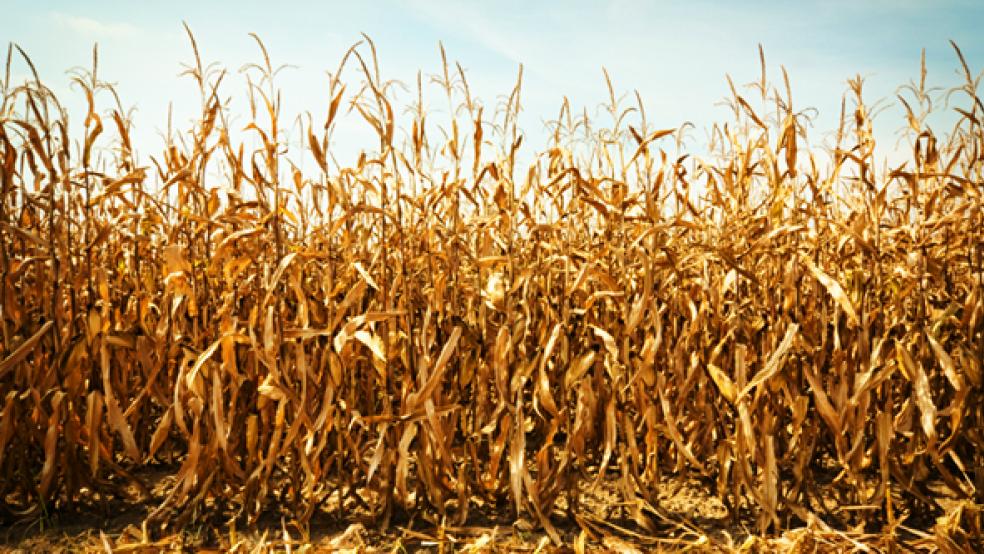If you don’t have enough to worry about with the stock market sagging and the economy in the doldrums, ponder these facts: The U.S. just experienced the hottest 12 months since the National Weather Service began keeping records in 1895; extreme weather events are on the rise around the globe; and the Midwestern grain belt is overdue for a major drought.
This isn’t a story about climate change or a subtle advertisement for hybrid vehicles. Global warming wasn’t even a concept during the 1930s dust bowl, the rain-scarce late 1950s or the major droughts that hit the U.S. plains in 1980 and 1988.
RELATED: Tornadoes, Hurricanes, Floods: Why You'll Pay, Too
But if you look at the pattern of those 20th century droughts, you’ll notice that they occurred with depressing regularity about two decades apart. It has been more than 20 years since America’s last unwanted dry season.
Given the unusually warm winter and with drought already plaguing large parts of the U.S. southeast and southwest, is there a cloudless summer on the horizon? Could this be the year when the nation’s corn, wheat and soybean crops wither?
“Weather is a very fickle event,” said David Miskus, a meteorologist at the National Weather Service. “For the most part, the nation’s breadbasket is looking pretty good. The warm weather allowed farmers to get out early.”
This spring’s jumpstart is reflected in the latest crop predictions from the U.S. Department of Agriculture. U.S. corn production will increase nearly 20 percent to 14.8 billion bushels this year, according to USDA, largely because of higher yields from more acres being pressed into production. Prices could fall as much as $1.50 to $5 a bushel.
The same situation holds for wheat, where U.S. production is expected to jump 5 percent to 2.2 billion bushels, the highest since 2008. Exports are expected to surge about 10 percent to 1.15 billion bushels or nearly half of all domestic production.
And the long-range weather forecasters at the National Climatic Data Center say shifting ocean temperature patterns in the Pacific off the coast of South America – the end of “La Nina” – portend a fairy normal season in terms of overall precipitation. “The drought forecast for states like Iowa and Illinois is improving,” said David Easterling, chief of the global applications division at the National Oceanic and Atmospheric Administration. “We could see normal conditions this year if that holds.”

But there have been ominous portents from other parts of the globe in recent years where the eternal hopes of springtime turned into quite barren falls.
RELATED: Extreme Weather Striking a Blow to Government Budgets
For instance, the great Russian heat wave from June to August 2010 destroyed a quarter of that nation’s grain harvest, killed tens of thousands in its major cities and cost the economy an estimated $15 billion in damages.
The massive Pakistani floods from a heavier-than-normal monsoon season, which began in July of that year, covered a fifth of that country, led to 2,000 deaths and temporarily displaced 20 million people. Nearly 6 million acres of farmland were damaged, dealing a severe blow to the most important part of that country’s economy.
Last year, much of the southern part of Thailand including its capital, were submerged under flood waters. The world’s largest rice exporting nation had been hit by a drought the previous year. More than 800 people died, the economy sustained an estimated $40 billion in damages and rice exports to other large Asian nations like Indonesia plummeted.
Major economic disasters due to disruptive weather events are on the rise here, too. Last year’s drought in Texas caused more than $5 billion in damages to its livestock and agricultural industries.
A new report from the Rocky Mountain Climate Organization reports that flooding triggered by sudden big storms have doubled over the last half century and are occurring with increasing frequency in the Midwest, which is the heart of America’s granary. The Iowa flood of 2008 wiped out Cedar Rapids and sent the Missouri River over its banks for hundreds of miles.
The report found that between 1961 and 2011, storms in the “worst” category, defined as three inches or more rain within 24 hours, increased 160 percent in Indiana, 203 percent in Wisconsin, 81 percent in Missouri, 180 percent in Michigan, 104 percent in Minnesota, 83 percent in Illinois and 32 percent in Iowa. In 2011 alone, flooding caused $2 billion in agricultural losses in the U.S. Midwest.
“That’s the thing about climate change; it makes weather more extreme,” said Gerald Nelson, a senior research fellow at the International Food Policy Research Institute, a Washington-based think tank. “When you have this general warming, the probability of events like that increases,” agreed Easterling of NOAA.
The short-term effect of extreme weather events is food price spikes. The price of basic food commodities like corn and wheat doubled in 2010, but more recently fell back by 40 percent to around $6 a bushel.
Most Americans barely feel the pain when commodity prices soar since they only account for 10 to 20 percent of the grocery story price of food. But the same can’t be said for poorer countries where food can consume half or more of household budgets.
“Our estimate is that prices will double by 2050,” said Nelson of IFPRI. “In the 21st century, we will be bumping up against the resource limits of the planet, both in land and water. As people get richer, diets improve.”
And climate change? That’s “a threat multiplier,” he said.





